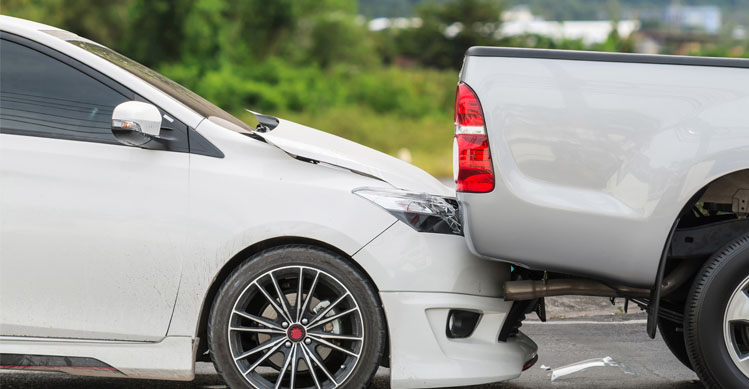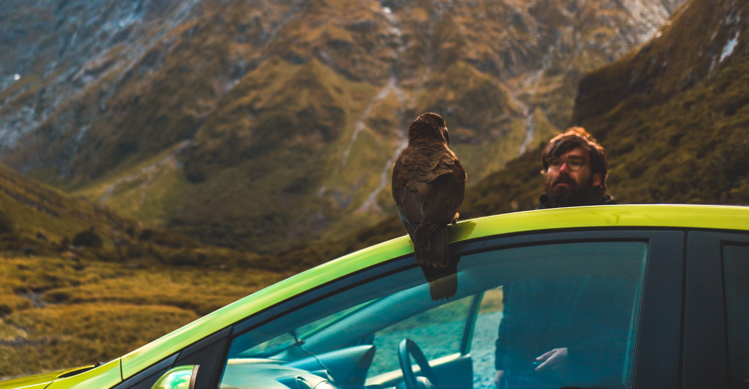Compared to some other countries, New Zealand has a relatively mild climate, but we still get our fair share of cold, nasty weather that can create some hazardous driving conditions.
During these times, drivers need to adjust their motoring behaviour to manage the added risks. To help keep you and your passengers safe on the road, have a read through these tips for driving in winter.
Windscreen visibility
After a particularly cold night, you might find your windscreen has iced up. This is easily dealt with by pouring room temperature water over the windscreen. The water will melt the ice fairly quickly, then you can scrape it off with a plastic scraper - never use a metal one, it could scratch the screen and create more visibility problems. Using your wipers will prevent the ice creeping back. Don’t use hot water to remove the ice - you could end up with a cracked windscreen, creating a much bigger problem for yourself.
If the problem is fogging up on the inside, the most effective way to clear this hazard is by using the de-mist function or have the air-conditioning directed at the windscreen; you’ll be seeing clearly in just a short amount of time. If your car isn’t fitted with these functions (or they don’t work), just set the fan to cold and have it blowing on the windscreen, then increase the temperature gradually.
Following distance
We should all be familiar with the two-second rule - the rule of thumb to keep your car at least two seconds behind the car in front of you (at any speed).
In winter motorists are often faced with slippery, icy or snowy roads that make sudden braking hazardous. When road conditions are severe, apply the four-second rule (or longer), so you’ll have more time to react to any unexpected events.
Dealing with black ice
Despite the name, black ice is actually clear. When water settles on the road it can freeze with a smooth surface; it’s transparent and looks like the black tarmac it is sitting on, making it very hard to see.
If you happen to hit a patch of black ice, you might temporarily lose control of the vehicle. This is very unnerving, but try to stay calm, keep the steering wheel straight, take your foot off the accelerator and resist the urge to brake, which will make your predicament worse. When the tyres find their grip again, the car will continue in the direction they are pointed.
When to use snow chains
If you live in a part of New Zealand that experiences snowfall, there’s a good chance you’ve seen signs about the place indicating where snow chains should be fitted. Snow chains provide traction in the snow. If you’re unsure when to use them, just remember there needs to be a thick enough layer of ice or snow for the chains dig into and be effective.
You don’t want to use snow chains without enough snow, as it could damage your tyres and the road itself. When chains are on, keep your speed to a maximum 30-50 km/h, however it’s always good to check the chain manufacturer’s recommendations and your car manual to be sure.
What should I check on my car?
It’s reassuring to check over your vehicle before setting out on a winter road trip, just like aircraft engineers give planes a once-over before take-off. If you’re unsure how to do some of these checks, have a friend or family member to help you out.
- Look over the tyres, check if there is plenty of tread and that the air pressure is correct. You can buy a tyre pressure gauge at any big hardware store.
- Check the windscreen wipers and the condition of the blades.
- Make sure all of your lights are working, including indicators.
- Check if any fluid levels need topping up, such as windscreen washer, oil and radiator fluids. To be extra safe, you could ask your service guy to check transmission and brake fluids as well.
- Have a look at the battery, make sure the connections are snug, there is no corrosion and the fluid level is high enough (if applicable).
- While you’re under the bonnet, have a look at the belts and hoses for any signs of wear. Also check that connections are tight.
- Another thing to think about is your tyre-changing skills. Have you ever changed a tyre? Maybe it’s time for a practice session, using your car’s manual to guide you.
When to use fog lights
Not all cars have fog lights and some people can get confused as to when they should be used. Here’s a clue: foggy days and nights, when visibility is down to 100 metres or less.
Fog lights are designed to be used in poor visibility conditions. They emit a short, wide beam of light directly in front of the car and the sides of the road.
Just as you wouldn’t drive with your high-beam headlights on, you shouldn’t drive with your fog lights on unnecessarily. When not needed, fog lights can dazzle and distract other drivers causing temporary blindness in approaching and/or following vehicles.
Know your car
Not everybody is a car enthusiast who knows their vehicle inside-out. The way certain vehicles are marketed can leave an impression on some people that their car is more capable of certain things than it actually is. It has been known for people to assume that all SUV’s are four-wheel drive, for instance.
Knowing whether your car is front, rear or four-wheel drive can make a difference to your trip and driving style, especially if you are fitting snow chains. It’s a smart idea to read the manual for your car.
Easy does it
To maintain traction on the slippery roads, you need to take it easy on the accelerator and brake pedals. Smooth and gentle application of these will help you stay in control and avoid doing wheel spins, getting stuck in mud and locking up the brakes.
A lot of modern cars feature ABS brakes and traction control, which safely help out in situations when you lose traction. Even with these great safety features in place, it’s still best to avoid needing them in the first place, i.e. drive to the conditions.
Prepare for the unexpected
Accidents happen. You can be a really experienced driver with the safest car and still be involved in an accident. It’s better to be prepared for the worst than to be left stranded or unable to help yourself or others.
Having at least a basic winter survival kit could make all the difference in these situations. Make sure your kit has an ice scraper, an emergency tool that includes a hammer for breaking glass and a blade for cutting seat belts (check the motoring aisle of your nearest hardware store), first aid kit, spare wiper blades, torch and batteries, and maybe a couple of warm blankets.
And don't forget, if you've got State Car Comprehensive cover, you're covered for towing and transport expenses to help get you home after an accident.
Prepare for the unexpected breakdowns
Add State Roadside Rescue to your policy for those times that you may be caught off guard. For just $30 extra each year, you’ll get up to two free Roadside Rescue call-outs over 12 months. No matter who’s driving your car, 24/7 help is just a phone call away. The best thing - it's available with all State car policies.
Don’t stress
Most people don’t enjoy driving in adverse weather conditions, but getting stressed while driving can snowball into full-on anxiety and affect your judgement.
Remember the tips in this article, take a deep breath and drive as you normally would, except leave more space and take things slower - it’s not a race.
If the weather gets particularly intense or you’re feeling pressure from other cars behind you, find a safe place to pull over for a while. Alternatively, avoid driving altogether and find a bus, plane or train for the trip. Don’t let your pride push you into a situation that you’re simply not confident or comfortable on the road.
Sort your car insurance with State.
You might also like...
-
 February 2022Driving Blog | State Insurance
February 2022Driving Blog | State InsuranceTop 10 Suburbs for Collisions
-
 August 2020Driving Blog | State Insurance
August 2020Driving Blog | State InsuranceProtecting Your Ride
-
 August 2020Driving Blog | State Insurance
August 2020Driving Blog | State InsuranceGetting Your Car Ready for a Summer Road Trip
